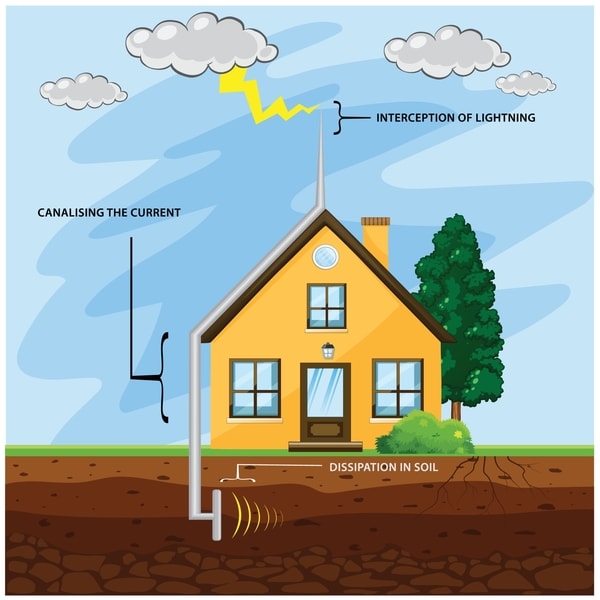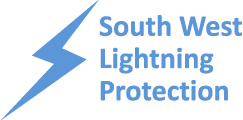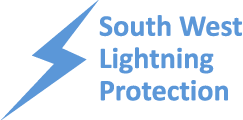Lightning poses a significant threat to people, the environment, and structures. Protecting these elements, ensuring uninterrupted services, and safeguarding cultural and material assets are crucial. To achieve this, the
lightning protection systems aim to capture lightning, safely channel its current to the ground, dissipate it, and ward off secondary effects.
Moreover, lightning protection standards in the UK lay out guidelines for assessing the risk posed to a structure. These guidelines determine if a lightning protection system (LPS) should be installed and specify the level of protection it must provide. But how do you know you’re building it the right way to get the desired level of protection?
The Protection Offered By Lightning Protection System in the UK
The level of protection offered by an LPS takes different factors into account. These can be:
- Lightning current characteristics
- The likelihood of staying within acceptable limits during a thunderstorm
Further, these limits are critical for sizing LPS components in establishing test parameters and placing LPS sensors. The components include:
- Metal sheet thickness
- Surge arrester capacity
- Safe distances from hazardous sparks
Fundamental Principles of Lightning Protection
- Capture or Intercept the Lightning Strike (Air Termination System): The initial step is intercepting the lightning strike using an air termination system.
- Convey the Lightning Current: Once intercepted, the lightning current must be safely channeled to the ground through a down conductor system.
- Effectively Dissipate the Lightning Current: The Earth Termination System ensures the efficient dissipation of the lightning current into the ground.
- Provide Equipotential Bonding: Equipotential bonding is essential to prevent hazardous sparking.
- Protection against Secondary Effects of Lightning: To safeguard against secondary effects caused by surges and transients, the installation of Surge Protection Devices (SPDs) is necessary.
Design Considerations by Lightning Protection Companies
The design of a Lightning Protection System involves numerous different things, adhering to established standards for risk assessment. Moreover, these factors encompass:
- The system's design considers the specific geographic location.
- The local terrain characteristics play a role in determining the design.
- Further, soil conditions are assessed to ensure effective grounding.
- The dimensions and height of the building tell us exactly what kind of system will work for it.
- One must never neglect the fact of how important it is to pick the right type of construction material.
- If any materials are stored within the building, their nature is taken into account.
- The purpose or use of the building influences the system's design.
Before proceeding with the structural LPS design, a
Risk Assessment establishes the required Lightning Protection Level (LPL). This is based on standards such as IEC/BS EN 62305 or internationally recognized criteria.
External Lightning Protection System
An external lightning protection system comprises one or more lightning rods, at least two down conductors, and a grounding system.
Interception: Air Terminal
Early Streamer Emission (ESE) air terminals continuously emit an upward streamer to intercept the descending lightning streamer before any other element within their protective range. The longer the lead time in creating the upward streamer (more time ahead of the actual lightning strike), the farther it can capture the descending streamer. So, the protection extends over a larger area. Further, the lightning rod's protective radius at various heights is determined by the:
- Advance time of the lightning rod
- Level of lightning protection
There are four levels of lightning protection that every company offers. Level IV offers the least amount of restriction, meaning it can catch high-current lightning but might miss low-current strikes. Level I, on the other hand, imposes stricter and safer requirements on the sensors, enabling them to intercept lower-current lightning strikes. Additionally, it must withstand the impact of high-energy lightning.
Down-Conductors
Down-conductor systems serve the undeniable role of safely conveying captured lightning currents to the earth-termination system. That, too, without generating harmful temperature surges that could damage the structure. Moreover, these systems must be installed to safeguard them during the discharge of lightning currents.
Among the notable accessories, lightning strike counters stand out as valuable tools for identifying whether a lightning strike has occurred within the installation. Furthermore, smart meters:
- Monitor the electrical activity within the down-conductor
- Analyze lightning strikes
- Employ IoT communication to transmit real-time data
Air terminations and down conductors are evenly spaced to
create a grid of conductors encircling the building and roof, commonly referred to as a Faraday cage. Besides, these components are connected using specially designed clamps and fasteners or by welding them together.
Grounding
Grounding is an
essential component of the external lightning protection system, with the primary responsibility of safely dissipating the lightning current into the ground. Moreover, the effectiveness of the grounding system hinges on the ground's conductivity. This conductivity is primarily electrolytic, resulting from dissolved salts in the water that saturates the ground.
To enhance it, you need to:
- Improve the ground's ability to absorb and retain water
- Increase the concentration of soluble salts
Internal Lightning Protection System
An internal lightning protection system should include a robust overvoltage protection setup and other measures. These mitigate the damaging impacts of lightning, such as equipotential bonding and shielding.
Transient over voltages can originate from various sources, but lightning-induced ones are the most destructive. Additionally, these brief voltage surges enter equipment through power lines, telephone lines, TV cables, or data connections. Overvoltage protection basically means continuity of services while reducing the risk of harm to people and property.
Surge protection devices remain inactive during normal electrical conditions but swiftly respond to transient surge spikes. They then direct the lightning current safely to the ground and safeguard equipment. After absorbing the surge, the protection device returns to its standby state.
Additionally, there are three main types of overvoltage protection:
Type 1:
These protect against direct lightning strikes and are typically installed in locations where lightning currents and electromagnetic effects are not significantly reduced, such as main switchboards.
Type 2:
These safeguard against the secondary effects of lightning. Also, they are installed in areas where lightning currents and electromagnetic effects have already been attenuated, for instance, in secondary frames.
Type 3:
These protect against highly damped over voltages, resulting in very low residual voltages. They are placed close to the equipment requiring protection.
Permanent Overvoltage Protectors
While permanent over voltages may not originate from lightning, they can be equally damaging. As a result, lightning protection companies offer dedicated protectors designed to counteract permanent over voltages. Besides, they provide combined protectors that address both transient and permanent over voltages. Permanent over voltages stem from issues such as neutral defects, breakage, or faults in transformer substations.
Two distinct types of systems are typically available in this category.
- One comprises a series of protectors exclusively tailored to counter permanent over voltages.
- The other includes combined protectors designed to tackle both permanent and transient over voltages.
The primary distinction between these two types lies in the inclusion of a cutoff mechanism that disconnects the line upon detecting a permanent overvoltage.
Maintenance and Lifespan of an LPS
The system you installed requires attention now and then, so it maintains its original current-carrying capacity. You can conduct lightning protection tests to see if anything needs updating. Further, regular checks of the earth rod resistances are vital to detect potential damage and mitigate risks.
Further, corrosion and fault currents can lead to high-resistance joints, which can result in overheating. However, an LPS can endure for many years with correct installation and maintenance.
Takeaway
Doing it all on your own? That’s great, but keep in mind this is something that will surely need professional assistance. You don’t have to search frantically for that; you’re just in the right place. Our company,
South West Lightning Protection, is proud of the protection systems and customer services we offer.


